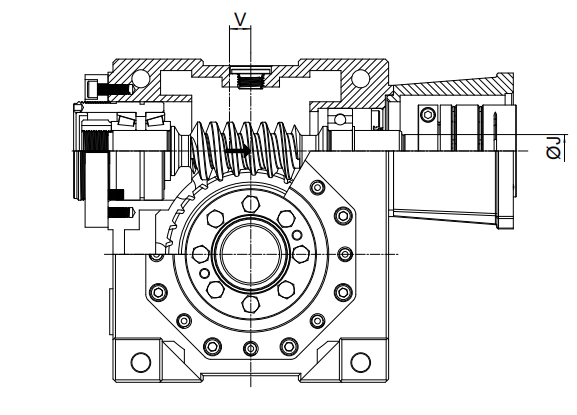The following headings incorporate data on important elements for assortment and right use of gearbox.
For certain data over the gearbox range,see the relevant chapters.
1.0 OUTPUT TORQUE
1.one Rated output torque
Mn2 [Nm]
The torque which will be transmitted constantly by means of the output shaft, with all the gear unit operated beneath a support factor fs = 1.
one.2 Expected torque
Mr2 [Nm]
The torque demand primarily based on application requirement. It is actually proposed to become equal to or significantly less than torque Mn2 the gearbox underneath research is rated for.
1.three Calculated torque
Mc2 [Nm]
Computational torque value for being utilised when selecting the gearbox.
It’s calculated taking into consideration the required torque Mr2 and services factor fs, as per the connection right here right after:Mc2 = Mr2 ?¡è fs ?¨¹ Mn2 two.0 Power
two.0 Power
two.1 Rated input power
Pn1 [kW]
The parameter could be found within the gearbox rating charts and represents the KW that will be safely transmitted for the gearbox, based mostly on input speed n1 and services aspect fs= one.
2.two Rated output energy
Pn2 [kW]
This worth is the power transmitted at gearbox output. it might be calculated together with the following formulas:
Pn2 = Pn1 ?¡è |?d
Pn2= Mn2*n2/9550
three.0 EFFICIENCY
Efficiency is really a parameter which has a major influence on the sizing of particular applications, and mainly depends on gear pair designelements. The mesh data table on web page 9 demonstrates dynamic efficiency (n1=1400)and static efficiency values.
Try to remember that these values are only achieved after the unit has been run in and it is in the working temperature.
three.one Dynamic efficiency
[|?d]
The dynamic efficiency will be the relationship of energy delivered at output shaft P2 to power applied at input shaft P1:
|?d =P2/P1
3.two Static efficiency[|?s]
Efficiency obtained at start-up from the gearbox. Even though this is often frequently not considerable issue for helical gears, it could be rather important when choosing worm gearmotors working under intermittent duty.
4.0 Service Factor
The service aspect (fs ) depends upon the working situations the gearbox is subjected on the parameters that should be taken into consideration to pick quite possibly the most adequate servies aspect effectively comprise:
one. type of load of your operated machine : A – B – C
2. length of day by day working time: hours/day(?¡Â)
three. start-up frequency: starts/hour (*)
Sort of LOAD: A – uniform,fa?¨¹0.three
B – reasonable shocks, fa?¨¹3
C – heavy shocks, fa?¨¹10
fa=Je/Jm
–Je(kgm2) minute on the external inertia decreased in the drive shaft
–Jm(kgm2) second of inertia of motor
–If fa>10 please make contact with our Technical Service
A -Screw feeders for light materials, fans, assembly lines, conveyor belts for light elements, little mixers, lifts, cleaning machines, fillers, manage machines.
B -Winding gadgets, woodworking machine feeders, items lifts, balancers,threading machines, medium mixers, conveyor belts for heavy elements,winches, sliding doors, fertilizer scrapers, packing machines, concrete mixers, crane mechanisms, milling cutters, folding machines, gear pumps.
C -Mixers for heavy products, shears, presses, centrifuges, rotating supports, winches and lifts for hefty resources, grinding lathes, stone mills, bucket elevators, drilling machines, hammer mills, cam presses, folding machines, turntables, tumbling barrels, vibrators, shredders.